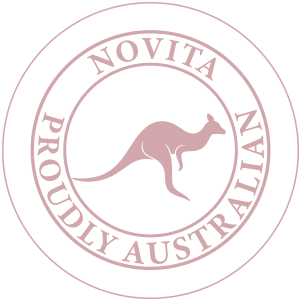BOOK AN APPOINTMENT


Crystallized pure carbon
Mohs hardnes Scale 10
Certified by Gemological institutes
Colour and Clarity Are permanent
Sustainable And ethical
Excellent value
Diamond tester test
Disreputable companies are spreading misinformation about the methods of growing diamonds and the superiority of one over the other: which is better or worse, CVD or HPHT. As you might have already noticed and wondered, the information coming from these companies and media outlets can be extremely contradicting when it comes to the topic of CVD vs HPHT diamonds.
Simply put, this is due to these companies trying to push an agenda; they will say whatever benefits them the most. For example, we found a company in Melbourne, Australia, that loudly preach to their customers that CVD is the best and advises them to avoid buying HPHT. While another company in the USA tells their customers, that HPHT is the best, advocating against purchasing CVD diamonds. The reality is they are both deceiving their customers with misleading and often false, statements. Both CVD or HPHT technologies can produce any colour, clarity, and size, from the unsellable to faultless diamonds. What is happening behind the scenes, is that each of their suppliers, the labs creating the diamonds, is giving them a better deal, and sometimes pressuring, on CVD diamonds but not HPHT ones and vice versa. Therefore, they push the one that yields them the most profit while moving the most stock, and they will say whatever they need to say to keep it that way.
When comparing CVD vs HPHT diamonds, there is absolutely no difference other than the process used to create them. You will not be able to tell the difference between HPHT vs CVD diamonds. Both methods are capable of producing the full range and quality of real diamonds that are optically, chemically, and physically identical to earth-grown diamonds.
We could dive deep into the technicalities of each method, detailing all the difference in the production process, but we believe it’s a waste of time at best and confuses and misleads people at worst. Instead, we prefer to provide you with practical and easy to follow reliable advice.
As you are aware, each and every one of our Lab grown diamonds are industry certified by leading certifiers, therefore when choosing your diamond, solely focus on trying and go for as high of colour and size as your budget allows it.
Additionally, when it comes to clarity, try to go for SI1 and above, with the exception of emerald cuts, where we recommend going for VS2 and above. By following those two simple guidelines we guarantee you will be happy with your choice, regardless of whether the production method was CVD or HTPT, since, as we’ve already discussed, it will make absolutely no difference to you.
For related search terms for similar articles, you can use any of the following search terms:
HPHT vs CVD, CVD vs HPHT, CVD vs HPHT diamonds and HPHT diamond vs CVD.
 FAQ'S
FAQ'SThere is no doubt that they are real diamonds. They are created using the same chemical and physical processes that happen naturally inside the earth but are grown in a controlled laboratory environment where a starter seed of diamond crystal gradually becomes bigger as more and more carbon atoms are deposited on it. Scientifically, lab made diamonds are exactly the same as natural diamonds chemically, physically, and optically. They are therefore considered to be real diamonds. The two leading authorities on diamonds, coloured stones, and pearls, IGI and GIA, both grade lab grown diamonds using the same scale and methodologies used on mined diamonds. Visit our lab diamonds guide to read more about this.
Diamonds grown in laboratories always cost significantly less than diamonds mined from the earth. The exact price difference will depend on various factors such as the size, quality, and specific type of diamond, but on average, lab grown diamonds are around 75% cheaper than natural diamonds. This is because the cost of producing rough lab stones is much lower than the cost of mining and extracting rough natural diamonds from the earth. In contrast, to become retail-ready, a rough diamond must go through all the same processes, including cutting, polishing, and certification, whether it comes from a mine or a lab. For example, on the massive savings you can take advantage of, a mined diamond costs $10,000, while an equivalent lab created diamond costs $2,500.
There is no difference between man made diamonds and mined diamonds; the same methods are used to test both diamonds as they are for natural diamonds. Both stones are chemically, physically, and optically identical, so they will exhibit the same properties and characteristics when tested. Among these are hardness, refractive index, thermal conductivity, and other unique characteristics of diamonds, whether they are mined or lab made diamonds.
Inclusions are also present in most lab diamonds, just as they are in natural diamonds. Inclusions are natural imperfections that are found within diamonds, and they can occur in both lab and natural diamonds. Inclusions can take many forms, such as tiny bubbles or carbon deposits trapped inside the diamond as it formed. Just like natural diamonds, most diamonds created in labs have flaws, and only very few become flawless. For more information about diamond clarity, check out our 4Cs guide.
Yes, you can insure it the same way you insured a mined diamond; lab gown diamonds in Australia are treated like mined diamonds, so they can be insured the same as mined diamonds. You can purchase insurance through your specialized jewellery insurance policy. Your insurance policy will typically cover the cost of replacing or repairing your ring if it is lost, stolen, or damaged. Understand what is covered and what is not by your insurance policy by reading its terms carefully.